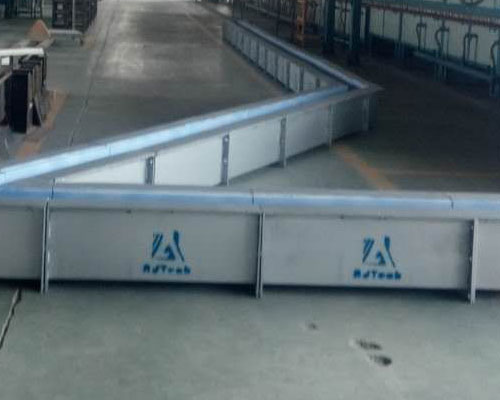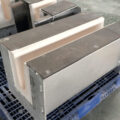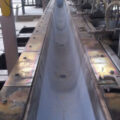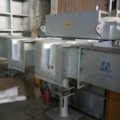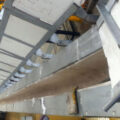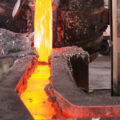In the launder system construction, the molten metal flows
The cross-section of the launder for casting molten metal is a U-shape that opens and widens upwards. The inner surface of the launder, which is in contact with the molten metal, is defined by refractory material, such as a ceramic-wearing composition. A suitable material is a refractory, castable mortar. The refractory material forms a flow channel for the molten metal, preferably an upward-widening groove with a rounded bottom.
It is preferable to dimension the flow channel so that
in normal operating conditions, the upper surface of the flowing molten metal extends to a height, which is 10 to 20% of the total height of the flow channel. The outer shell of the launder is preferably made of metal, such as steel. When producing the ceramic lining, the steel shell serves as a mold and facilitates transportation to the installation site.
The launder for casting molten metal comprises a metal shell
such as a steel jacket, which forms the outer surface of the launder bottom, a refractory lining, which defines a flow channel for the molten metal, and an insulating layer that is arranged between the refractory lining and the metal shell, the insulating layer being considerably better in heat insulation than the refractory lining.
The refractory lining of the flow channel of the launder system is preferably made so thick
that the temperature of the outer surface of its bottom is within a range of 600 to 900° C. The molten aluminum penetrates the porous refractory lining. It solidifies therein, forming a fixed layer of aluminum in the lining in a place, where the temperature is in the area of the solidification point of aluminum.
Accordingly, it is preferable to make the refractory lining thick and to arrange the heat insulation of the launder so that, in the operating state, the temperature range corresponding to aluminum’s solidification point is inside the refractory lining. In some other embodiments of casting launder, molten copper, zinc or metal alloy flows in the launder, whereby the insulations of the launder are constructed to correspond to the melting temperatures of these metals.

